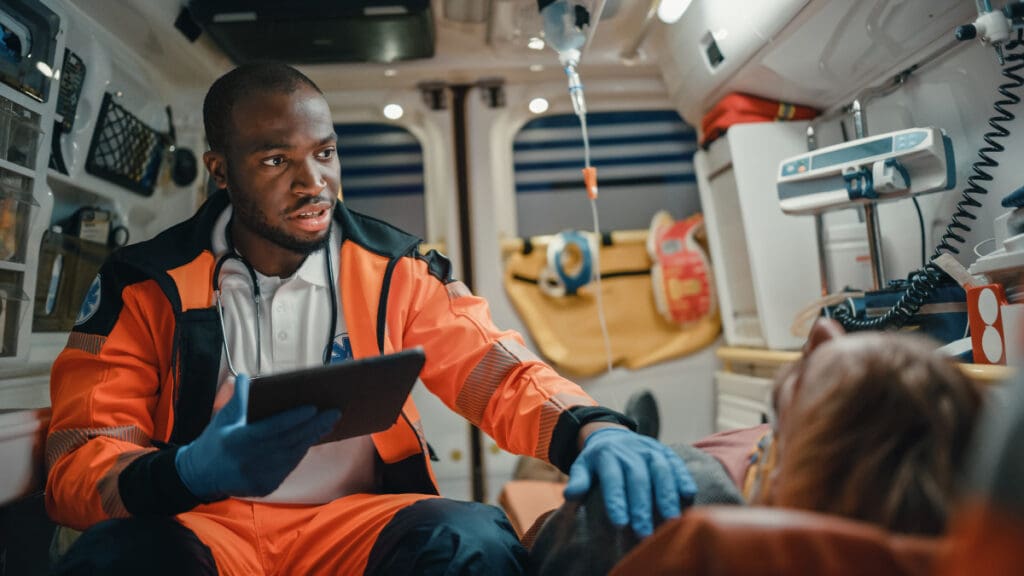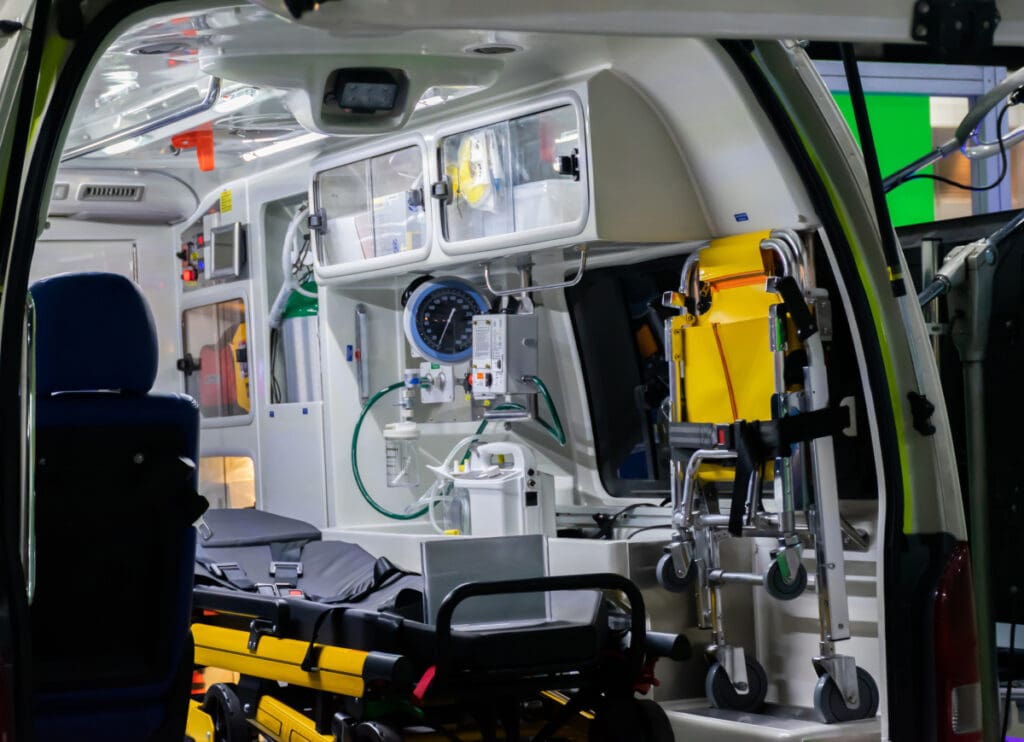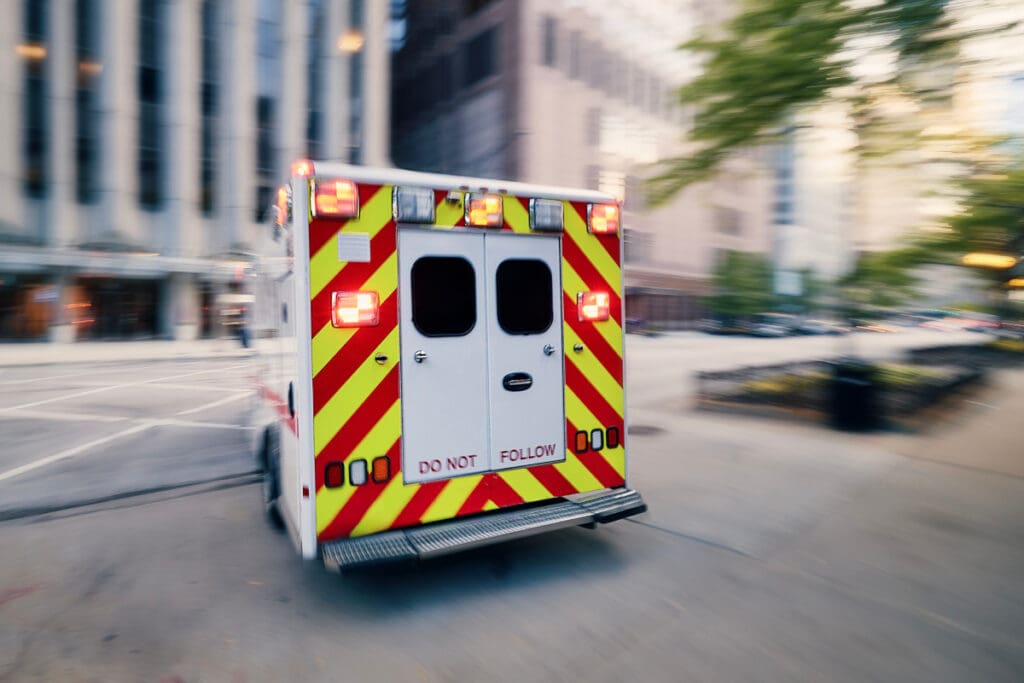Community
Staff Spotlight: Kara Spurbeck
Let’s look at the cost of an ambulance ride in Arkansas compared to other states. In addition, we’ll answer some frequently asked questions and tackle a few common misperceptions about taking an ambulance.
Ambulance costs can vary depending on several factors. We’ll start with the low end. The base cost of an ambulance typically ranges from $600 for non-emergent trips to $750 for emergent trips.
The average cost of an ambulance ride is typically around $2,125. This is a final number after all fees have been added but this number is only an estimation. Let’s dive further into the cost of an ambulance ride:
Normally, ambulance trips have a base rate or pick-up fee. The range of the pick-up fee varies widely from $400-$1,200. The base rate of an ambulance is a fixed fee regardless of the distance traveled. The “pick-up fee” only covers the costs of having personnel and ambulances available to respond to 911 calls.
Next, you have the cost of mileage. You’ll pay for the distance traveled in an ambulance. Typically, mileage costs range from $10 to $30 per mile. The mileage costs start once they arrive on the scene and end once they deliver the patient to a hospital. Mileage costs help cover fuel costs, vehicle maintenance, and vehicle depreciation.
Arkansas has the highest average mileage for emergency ground ambulance trips at 27.9 miles.
After mileage costs, life support charges while in the ambulance are factored in. Patients either receive basic life support (BLS) or advanced life support (ALS). Basic life support charges run from $800 to $975 while advanced life support runs from $1,050 to $1,300.
You may need extraordinary measures like Airevac, a helicopter flight, or a plane ride. Airevac charges are much higher than the cost of a ground ambulance. Airevac offers “bed-to-bed service” which translates to tens of thousands of dollars. The cost of an emergency medical air evacuation can range from $25,000 to $100,000 or more.
Emergency helicopter trips are similarly priced. The minimum cost of a helicopter transport starts at $12,000 and goes upwards of $25,000. Similarly, medical flight base costs range anywhere from $10,000 to $15,000 for short trips only. Depending on the distance traveled, longer trips will mean higher costs. After the bigger charges, you’ll be charged for minor charges like oxygen and medical supplies, wait times, and specialty care transports.
Ambulance trips are one of the only things not covered under the No Surprises Act. The No Surprises Act is designed to prevent emergency care costs from taking patients by surprise. In an emergency, consumers are rarely informed of the cost of medical services before they receive treatment.
Many factors go into the cost of an ambulance ride in Arkansas. For example, around-the-clock staffing translates to high upkeep and necessary wages. Emergency personnel working on the trucks are highly trained and available 24 hours a day, 7 days a week, 365 days a year.

Additionally, the high cost of equipment inside the truck demands equally high charges.
After that, overhead fees that include the cost of the vehicle itself and insurance factor in. Added to that are gasoline prices and the communications systems it takes to run inside the vehicles.
There are also tons of insurance factors you must remember for ambulance rides. First, did you have health insurance at the time of your ambulance ride? If not, that ride cost is going to be a lot higher than if you did. Next, does the ambulance company engage in balance billing? Is this ambulance service even in your health plan’s network? What services did you receive while on the truck? Advanced/basic life support, specialized services, extraordinary measures, etc? How far did they have to take you? Do they charge by mileage or not? And where were you when picked up? The site of a crash, your home, or another medical facility? Each of these heavily influences the price of an ambulance ride, thus why they’re so expensive.
It can be tricky knowing whether you need an ambulance ride to the hospital or urgent care. Right off the bat, if you’re going to urgent care rather than the ER, you’re likely better off driving yourself.

There’s an easy list of symptoms to remember that translates to an automatic “yes” to an ambulance ride. If you experience:
…then it’s best that you take an ambulance. An ambulance ride could save your life.
If you’re wondering “Can I refuse an ambulance ride?” the answer is yes.
You might realize it’s cheaper to use a rideshare to take you to the urgent care or emergency room as opposed to an ambulance. However, you can only refuse if you are competent and an adult (18+).
If you are at the scene of a crash/incident, you may still get checked out by emergency personnel, and still receive a bill. This bill depends on your location and the emergency services responding. In Northwest Arkansas, it could be upwards of $100 based on how far out of the city limits you are located (Rogers Gov). If you feel like the bill is a mistake though, you can appeal it.
Understandably, there are several misconceptions about ambulances. Let’s dive into five of the most common misconceptions:
The first common misconception made after receiving an ambulance ride is to think that the ambulance costs will be included in your emergency room costs. Ambulance bills are billed separately from ER visits. After you receive ER care, you will receive two separate bills – one from the ambulance company and one from the hospital.
The second common misconception is believing your insurance will fully cover your ambulance ride. Insurance coverage varies by plan and policy. While some insurance coverage may cover most of the costs others won’t cover any of the ride costs. This leaves some hefty out-of-pocket fees. Even if your insurance coverage pays part of the cost, there may still be copayments and deductibles to cover.
A third common misconception is that ambulance services are charged at a flat rate. As we mentioned above, that’s not the case. Additional charges can and will be added to the “flat rate” you might expect. Additional charges incurred vary by the supplies used, the distance covered, and the level of life support required.
Another common misconception about ambulance rides is that they are consistent across all providers. This is not true! In reality, costs vary widely across emergency providers. Some ambulance services are locally run by their government or municipality. Other emergency transportation is run by the hospital itself. And others are run by private companies. Each ambulance company has its own pricing structure. Keep in mind that patients can’t necessarily choose which provider is dispatched.
The fifth and final misconception in the ambulance ride world is that only those who call for an ambulance are billed. The bill in most cases goes to the patient who received ambulance services, no matter who called for an ambulance.
Balance Billing: when you are charged the difference between their price and what your insurance covers (Gerencher/Golden).
Basic Life Support: services that can be provided by either a paramedic or emergency medical technician. These services are for patients who do not need cardiac monitoring or respiratory interventions. It’s also called “first-step treatment” (Mira).
Advanced Life Support: more invasive services and requires procedures with needles or other devices that make cuts in the skin, requiring paramedics to have a higher level of training than an EMT. These rides typically have airway equipment, cardiac life support, cardiac monitors, and glucose monitors on board (Mira).
Specialty Care Transport: for critically ill or injured patients who need a higher level of care during transport, such as that provided by a nurse or paramedic with extended skills. This cost is even higher (Mira).
